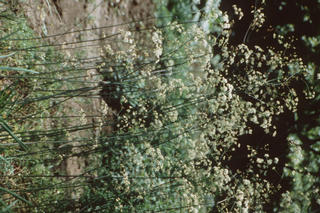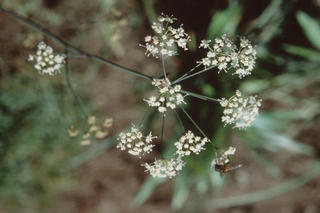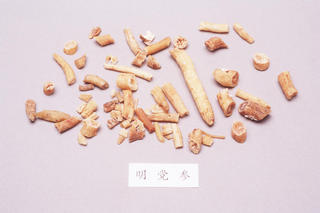Changium smyrnioides
Contents
Nomenclature
Other Names:
Historical Use of Changium smyrnioides
Changium smyrnioides in Traditional Chinese Medicine
Background
Chinese Name (pinyin): Mingdangshen
Chinese Name :
Common Name :Medicinal Changium Root
Specific Name : Radix changii
Scientific Name:
Collection : The drug is collected in April and May, removed from rootlet, washed clean, treated with boiling water until the cut surface is devoid of white core then taken out to scrape off the outer bark, and dried after rinsing.
Description : Slenderly cylindrical, long fusiform or irregularly stripe shaped, 6 - 20cm long, 0.5 - 2cm in diameter. Externally yellowish white or brownish, smooth or with longitudinal furrows and rootlet scar, some showing many reddish-brown mottles. Texture hard and fragile, fracture horny, bark relatively thin, yellowish white, sometimes easily separated from whitish wood. Odour slight and taste weak.
Identification : Carry out the cold maceration method under the determination of water soluble extractives (Appendix X A), not less than 20.0%
Processing : Wash clean, soften thoroughly, cut into thick slices and dry.
Action : To moisten the lung and resolve phlegm, mourish yin and regulate the function of stomach, to subdue hyperactivity of the liver, and to counteract toxicity.
Indication : cough caused by heat in the lung; vomiting, regurgitaion, anorexia, dryness of the mouth; bloodshot eyes and vertigo; boils and sores
Precautions :
Dosage : 6 to 12 g.
Storage : Preserve in a ventilated dry place, protected from moisture and moth.
Synonymns for Changium smyrnioides
Patent Medicines and Medicines with Multiple Ingredients that include Changium smyrnioides
Pharmaceutical Information
Chemical Constituents
Evidence or the Use of Changium smyrnioides in the Treatment of Epilepesy
Basic Science
Animal Studies
Cohort, Case-Control and Non-Randomized Trials
Randomized Controlled Trials
Meta-Analysis
1st Five Results: pubmed search
Zhenzhen Bao, Ziyan Zhu, Yanan Gai
##Title##
Mitochondrial DNA B Resour: 2019, 4(2);4081-4082
[PubMed:33366328]
[WorldCat.org]
[DOI]
(I e)
Lu-Jing Lei, Wen-Le Wang, Jie Wang, Li-Juan Lv, Min-Hui Li
A review of the ethnopharmacology, phytochemistry, and pharmacology of Changium smyrnioides Wolff.
J Nat Med: 2019, 73(1);1-10
[PubMed:30182179]
[WorldCat.org]
[DOI]
(I p)
Chang-Lin Wang, Qiao-Sheng Guo, Bo-Xing Cheng
[Analysis on character of mineral elements in Changium smyrnioides and rhizosphere soil].
Zhongguo Zhong Yao Za Zhi: 2018, 43(8);1579-1587
[PubMed:29751703]
[WorldCat.org]
[DOI]
(P p)
Jing Cai, Yun Ma, Jian-Wei Chen, Xiang Li, Ping Zhou
[Effects of methyl jasmonate on accumulation of furanocoumarins in Changium smyrnioides and its suspension cells].
Zhongguo Zhong Yao Za Zhi: 2017, 42(1);76-82
[PubMed:28945028]
[WorldCat.org]
[DOI]
(P p)
Chang-Lin Wang, Qiao-Sheng Guo, Zai-Biao Zhu, Bo-Xing Cheng
Physiological characteristics, dry matter, and active component accumulation patterns of Changium smyrnioides in response to a light intensity gradient.
Pharm Biol: 2017, 55(1);581-589
[PubMed:27937676]
[WorldCat.org]
[DOI]
(I p)


